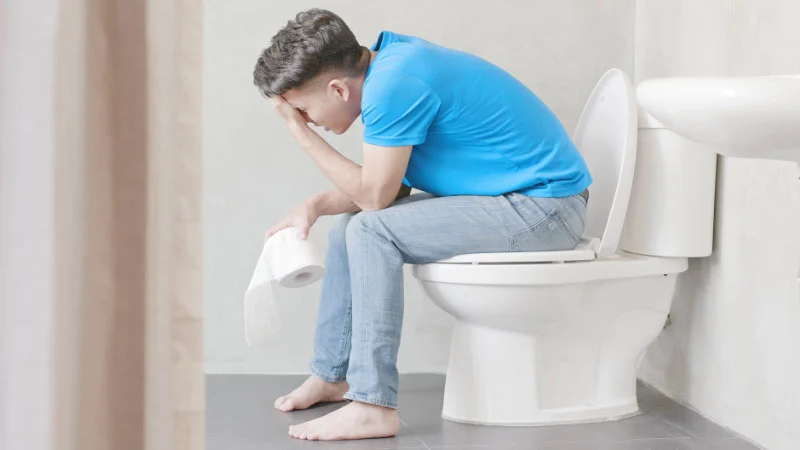An anal fissure, also known as a rectal fissure, is a tear in the flat epithelium and mucosa of the anal region. It usually occurs in the weakest part of the anus, called the anoderm. Anal fissures can occur in individuals of any age, regardless of gender, and are also common in babies. In babies, anal fissures often occur due to bowel and gas problems or when they have difficulty defecating. This situation creates pain in the anus, leading the baby to avoid defecating and thus entering a vicious cycle. In such cases, appropriate treatments are applied to heal the fissure. An anal fissure can develop acutely and may become chronic if not treated over a long period. A chronic anal fissure lasts longer and can become inflamed, unlike an acute anal fissure.

Symptoms of Anal Fissure
Individuals with anal fissure typically experience similar symptoms, though the intensity of symptoms can vary from person to person. The most significant symptom of an anal fissure is tearing and a sensation like glass cutting during defecation. The pain continues for a while after the painful defecation process. Therefore, patients may actually contribute to the progression of the fissure by tensing up or delaying defecation to avoid pain. Other symptoms of an anal fissure include irritation, itching, swelling, and minor bleeding in the anus. When the fissure deepens and becomes chronic, formation of a tag and inflammation can also be observed. Advanced painful chronic anal fissure can affect the urinary tract, leading to dysuria (burning during urination), pollakiuria (frequent urination), or urinary retention (inability to urinate). Symptoms of anal fissure can resemble those of other diseases such as hemorrhoids, anal cancer, and anal abscess, so a doctor’s diagnosis is essential.
Causes of Anal Fissure
Anal fissures can occur due to genetic factors, dietary habits, and toileting routines. Genetically, the ring at the anal exit may be narrower than it should be, making it more susceptible to tearing during strain. In some individuals, the sphincter muscle is tighter and more rigid than it should be. Apart from genetic reasons, the most significant cause of anal fissures is toileting habits. Individuals who do not have a regular bowel movement, strain during defecation, suffer from prolonged constipation or diarrhea are at risk of developing an anal tear. Strain and irritation from constipation can lead to tearing, while frequent toileting and cleaning due to diarrhea can also cause a tear. Childbirth is another common cause of anal fissure due to the strain and pushing during delivery. Rarely, conditions such as Crohn’s disease, sexually transmitted diseases, and ulcerative colitis can also lead to anal fissures.
Diagnosis of Anal Fissure
Although symptoms are a significant indicator for diagnosing an anal fissure, a doctor’s examination is necessary for a definitive diagnosis. During the diagnosis of an anal fissure, the doctor performs a physical examination visually and with a finger to detect the tear. During the examination, the patient stands and bends forward with their forehead or elbows on the examination table. If other diseases are suspected, the doctor may request colonoscopy or rectosigmoidoscopy tests. Manometric measurement can also be done during the diagnosis of an anal fissure. While the normal resting pressure of the anal canal is 90 cm H2O, it is higher in the presence of an anal fissure.
What Helps Heal an Anal Fissure?
Fundamentally, healing an anal fissure involves relaxing the muscles in the area to provide relief. The interventions that patients can perform themselves are aimed at promoting this relaxation. Applying heat can help relieve tension in the area, aiding muscle relaxation, so warm sitz baths are recommended. Applying local anesthetic creams to relax the area and eliminate pain is also possible. Another important consideration is the individual’s lifestyle. Dietary habits and toileting routines are crucial for anal fissure. Regular and healthy eating, including fiber-rich foods, can prevent constipation, a major cause of anal fissure. Besides preventing constipation, toileting habits can also be regulated.
Treatment of Anal Fissure
The treatment of an anal fissure involves a three-stage approach, varying according to the cause of the condition. The first stage involves trying to solve the problem by changing lifestyle and dietary habits. If the cause is genetic, these changes may not be sufficient. In such cases, the second stage involves Botox treatment. Botox injections into the sphincter muscles relax and relieve the smooth muscle. It is a preferred method by patients because it is an easy procedure and does not require surgical operation. However, Botox treatment may not be sufficient or may need to be repeated in some cases. Finally, the third stage involves surgical treatment options. Surgery becomes mandatory when other treatment options do not provide a permanent solution.